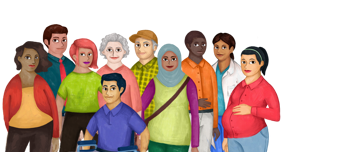
On May 27, the All of Us Research Program marked one year since the beta launch of its Researcher Workbench.
The Workbench is the centerpiece of the All of Us Research Hub, the online destination where users can explore data—including physical measurements, surveys, and electronic health records (EHRs)—contributed by more than 315,000 participants. Thanks to a number of outreach events, office hours, and feedback sessions, the Workbench experienced a steady growth of registered users.
In addition, new kinds of data, including Fitbit data and results from the COVID-19 Participant Experience (COPE) survey, strengthened the Workbench’s offerings. As of June 2021, more than 800 researchers have gained access, over 570 research projects have been launched, and more than 200 institutions have signed on to our Data Use and Registration Agreement.
This year also saw the first peer-reviewed publication using All of Us data by researchers outside of the program. They examined health care access by cancer survivors.
"This year has been fantastic from my perspective. We are starting to see fruits of our labor," says Vanderbilt University Medical Center-based Kelsey Mayo, Ph.D., manager for the All of Us Research Hub products.
Finding new ways to grow and strengthen researchers' connection to All of Us is central to the All of Us approach. Because enrolling a million participants will take time, the idea was to launch small and iterate over time to build the program, says Dr. Mayo. This approach gives researchers who use the Researcher Workbench a pivotal role in developing the resource. For example, user feedback underpinned one of the year's Workbench success stories—the retooling of two tools.
The tools, the Cohort Builder and Concept Set Selector, do very different things. The first pulls together participants with similar qualities, such as people with type 2 diabetes. The second brings together similar concepts, such as a particular diabetes medication.
At first, searching for information was easy on one and hard on the other. The Cohort Builder used a simple point-and-click interface. But the Concept Set Selector required users to search for information in a complex, disjointed way. Feedback from researchers helped the design team harmonize the user experience for the tools, says Dr. Mayo. But still the team has plenty to do. Next steps include expanding the data analysis software options to include the oft-requested software tool 'R Studio.'
Another achievement is the broad application of the program’s EHR model, says All of Us’s chief executive officer, Joshua Denny, M.D. All of Us brought together 16 different types of EHRs from more than 50 data providers, making the information broadly accessible to program users.
"With our diversity and all the linked EHR and survey data, I think we’ll start to see some truly novel discoveries," Dr. Denny says.
Ultimately, the success of All of Us relies on scientists as partners.
"We're asking the scientific community to help us co-design, grow, and evolve the Research Hub," Dr. Mayo says. "We’re doing things differently and it takes a lot of trust. The fact that researchers seem open to taking this journey with us is both promising and inspiring."
This article appeared in the June 2021 issue of All of Us Research Roundup. If you would like to receive the quarterly researcher newsletter directly, you can SUBSCRIBE HERE.
